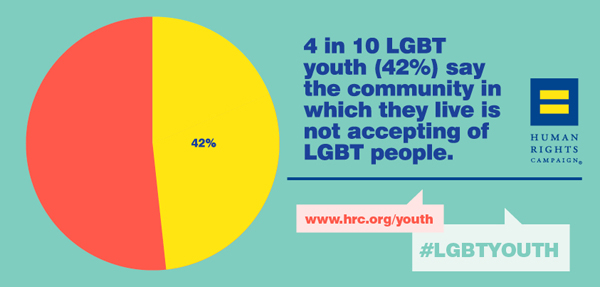Hyperlinks
As with most of our readings, this piece exposed me
to a new perspective. Maybe because I haven’t witnessed direct bullying of
someone who identifies as LGBT I thought of it as an issue that didn’t apply to
the world immediately around me, but maybe I wasn’t really looking, or didn’t
know what to look for. Perhaps because of my social power, I wasn’t aware of
those who don’t have it. In my schooling, I don’t remember having a teacher lay
out a direct lesson plan to discuss LGBT topics, but nor do I remember my teachers
incriminating against it. Do you think schools aren’t teaching LGBT related
topics because it doesn’t directly apply to a majority of the students, or
intentionally being exclusive? Megan Boler says we should over-represent
minorities to atone for their previous lack of exposure. I don’t agree with
this, I don’t think it provides a good example of equality and fairness. I
think that by singling out, and providing such direct over-exposure, you’re
still alienating a group of students, which is counter to what we are trying to
achieve. We can’t go back and undo what damage has already been done, we can’t
bring Justin Aaberg back to life by over-exposing the issues surrounding the
LGBT community. But what we can do is provide education on LGBT topics that are
equal to heterosexual education, and work towards preventing further damage.

These statistics really emphasize the need for what the article Safe Spaces seeks to provide; a place where everyone feels accepted for who they really are.
Another facet I hadn't known about, but stumbled upon, was the prevalence of homelessness among LGBT youth. This site provides some basic facts.
I also found the story of a girl named Jackie (and several others), who was disowned by her family when she told them she was a lesbian. The article also explains that highly religious families are a major cause of homeless LGBT youth, and delves into what it means to be a homeless LGBT youth.
While I understood the concepts discussed in the article, I wanted more specific information on what exactly teaching LGBT tolerance and acceptance looks like in the classroom, and how to make a school safe for those who identify as LGBT.
This article gives details about how to ensure a school is safe and welcoming for all students.
And this site is for a program who's goal is to teach tolerance.


Lindsey,
ReplyDeleteTo answer your question regarding the teaching of LGBT issues, I feel some teachers are not focused or interested in LGBT issues because it makes them uncomfortable. I say this because this was the case at my high school. Every time a student would bring up the idea of incorporating LGBT issues into the curriculum due to the amount of bullying, or even creating a LGBT club the ideas were either ignored or the teachers would change the subject.
I liked all of the charts and graphs that you used in your blog to give a better understanding of what members of the LGBT community really deal with and how important it is for teachers to help make schools and classrooms a safer enviornment for them. Great job!
ReplyDelete